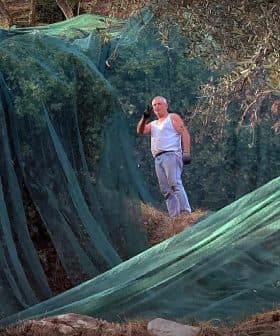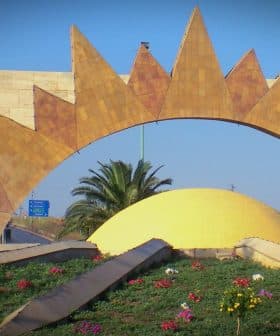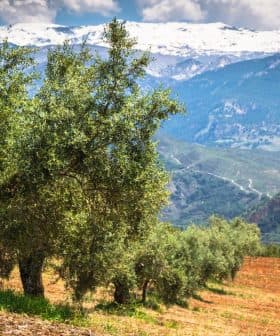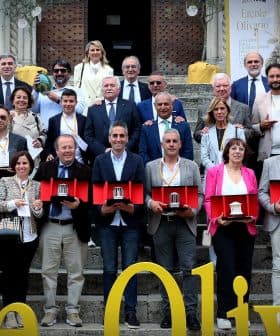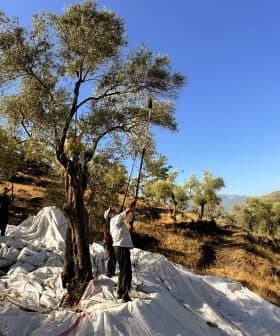Recent Rain and Snow Not Enough to Break Italy’s Drought
Scientists say more needs to be done to adapt, from wastewater recycling to planting less water-intensive crops.
 Grosseto. Italy
Grosseto. Italy The Italian National Research Council Institute for Bioeconomy’s drought observatory reported that 2022 was a year of extreme weather in Europe, with record heat and drought. The lack of rain and high temperatures significantly impacted agriculture, particularly olive oil production, prompting experts to advise farmers to save water and implement more efficient irrigation techniques to combat future droughts. The observatory predicts that water availability in Europe, especially in the Mediterranean regions, will decrease by 2040, emphasizing the importance of changing water resource management practices.
According to the latest reports from the Italian National Research Council (CNR) Institute for Bioeconomy’s drought observatory, 2022 was a year of weather extremes in all respects for Europe.
In central and western Europe and the central Mediterranean, 2022 was the hottest year on record. Nine out of 12 months recorded positive temperature anomalies. In terms of rainfall, a good share of the European territory was still affected by a long-term severe-extreme drought at the end of January 2023.
We now realize that water abundance should not be taken for granted. The way to manage water resources should be changed, especially in some areas.
“The summer of 2022 in Europe was the hottest and driest of the past 500 years, as emerges from a study carried out by our colleagues of the European Commission’s Joint Research Center (JRC),” Ramona Magno, the scientific coordinator of the drought observatory, told Olive Oil Times.
“We can safely say that this is neither the first nor the last drought,” she added. “Our analyses show that since the beginning of this century, every three or four years, Italy has suffered a high-intensity drought with a fairly long duration of more than a year, which means a significant reduction in rainfall.”
See Also:Climate, Environmental Degradation Threaten European Food SecurityData from the CNR Institute of Atmospheric Sciences and Climate show that 2022 was the driest year in Italy since 1800, with a 30-percent rain shortfall at the end of the period.
The deficit rises to 40 percent in the country’s northern regions, where 11 out of 12 months, except for December, saw below-average rainfall.
Snowfall was also below average and lower than the previous season – the Apennines were the most affected area, with the snowpack limited to the highest peaks.
Snowfall in the second half of January 2023 partially restored the deficit, especially in central regions, but it is not enough to reach the average values from 2011 to 2021 in the Alps.
“In addition to the lack of rain, the high temperatures led to a mild winter,” Magno said. “This happened mostly in the northwest of the country, where the above-average temperatures turned into strong heatwaves from late spring to summer.”
“Furthermore, the hot and dry winter winds accelerated the process of evaporation of moisture of soil and led to an early drying of it,” she added.
The latest report from the Institute of Services for the Agricultural and Food Market (Ismea) found the prolonged lack of rain and the high summer temperatures hampered the vegetative development of the olive trees in many areas of Italy, significantly contributing to the drop in olive oil production.
With reservoirs and groundwater depleted by months without rain, farmers made wide use of emergency irrigation whenever possible. Only at the end of August did the rains return and bring some relief to farmers.
“The drought has gradually moved toward the center and part of the southern regions,” Magno said. “Until the beginning of autumn, central Italy also had problems with low water availability in rivers and lakes, also considering the winter’s poor snowfall that was halved compared to the previous season.”
“Many thought that the rains we have seen in mid-late August and September 2022 and January 2023 could end the drought,” she added.
However, Magno said that despite these rains partially reducing the water deficit in central Italy, the long-term water deficit remains in the country.
“If we analyze the long-term deficit, over 12 to 24 months, the rain was insufficient to reverse the deficit in the north,” Magno continued. “Moreover, average temperatures were higher than normal in this first month of 2023, thus increasing the evaporation from the soil.”
As the drought observatory recently tweeted: while drought continues to affect areas of Europe and the Mediterranean basin, northern Italy suffers from a precipitation deficit that has lasted for two years.
“In broad terms, given the trend of precipitations, which tend to decrease over time and change their distribution throughout the year, we will see increasingly frequent and intense droughts alternating with periods of rains, which can be very heavy and, therefore, cause flooding,” Magno said.
Declining rainfall in the region also coincides with increasing demand. As the world population steadily rises and lifestyles change, the drought observatory forecasts water availability in Europe, especially in the Mediterranean areas, will tend to decrease by 2040.
It may seem obvious, but the main advice of experts for farmers is to save water, which can be done following their practical advice.
“We now realize that water abundance should not be taken for granted,” Magno said. “The way to manage water resources should be changed, especially in some areas.”
“Let us consider, for example, that Italy’s northern regions are less used than the southern ones to drought events,” she added. “Since the farmers in the south have long since become accustomed to hot and dry weather, many of them have already implemented drip irrigation systems.”
The first suggestion is to optimize irrigation. “Besides, we suggest opting for crops and plant olive varieties more suitable to withstand prolonged lack of rain,” Magno said. “We also invite farmers to apply precision agriculture.”
“Thanks to the use of satellite images, it is possible to detect the area of the field where the plants are most stressed and to intervene only in that specific part, thus saving water but also fertilizers and the amount of work, which translates into economic savings,” she added.
Furthermore, the experts now encourage the re-use of urban wastewater. “In some countries, the use of sewage water for crop irrigation after a purifying treatment is already widespread, while in countries like Italy is emerging now,” Magno said. “We think this should be a research sector to be implemented.”
Share this article



